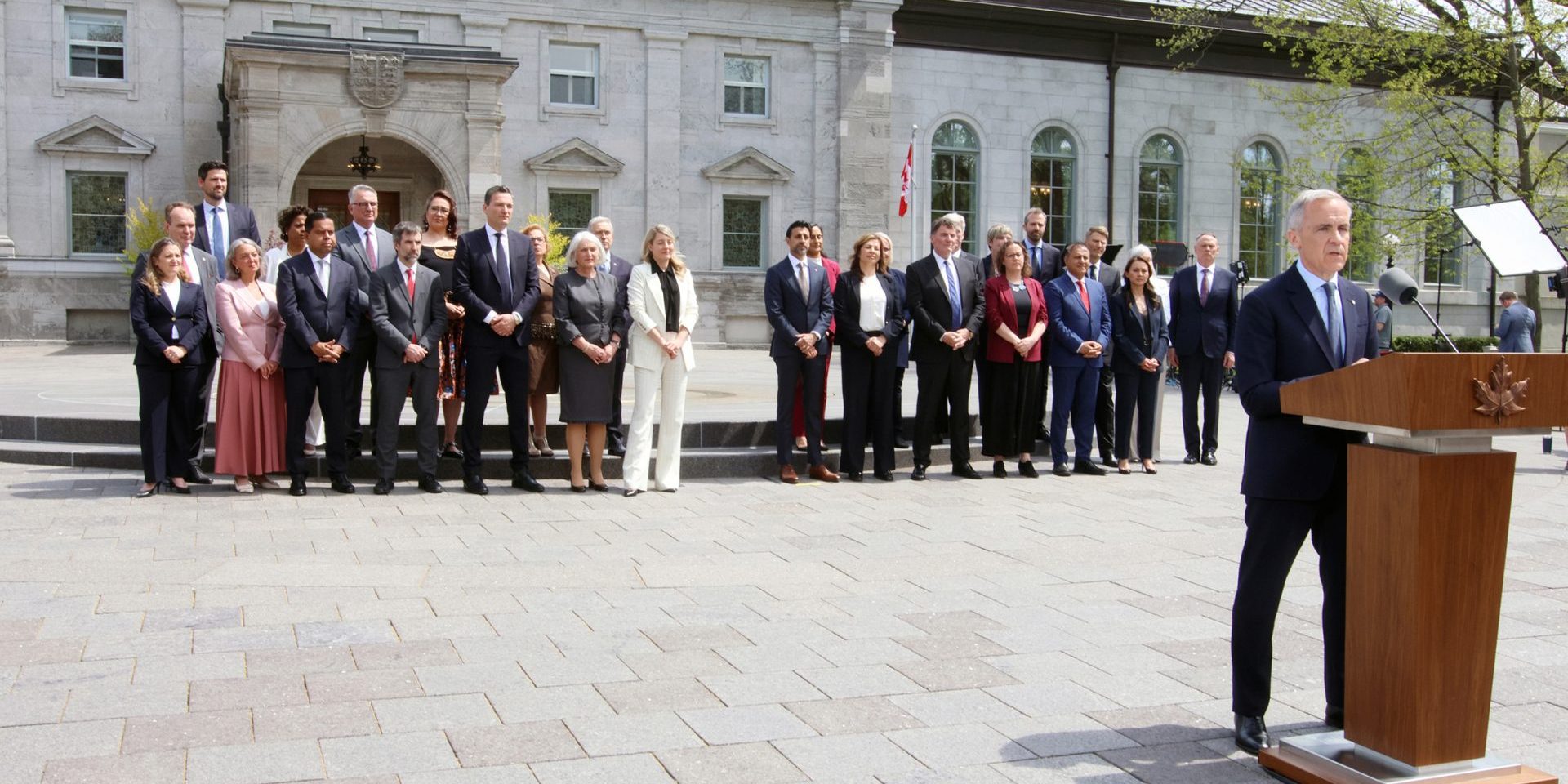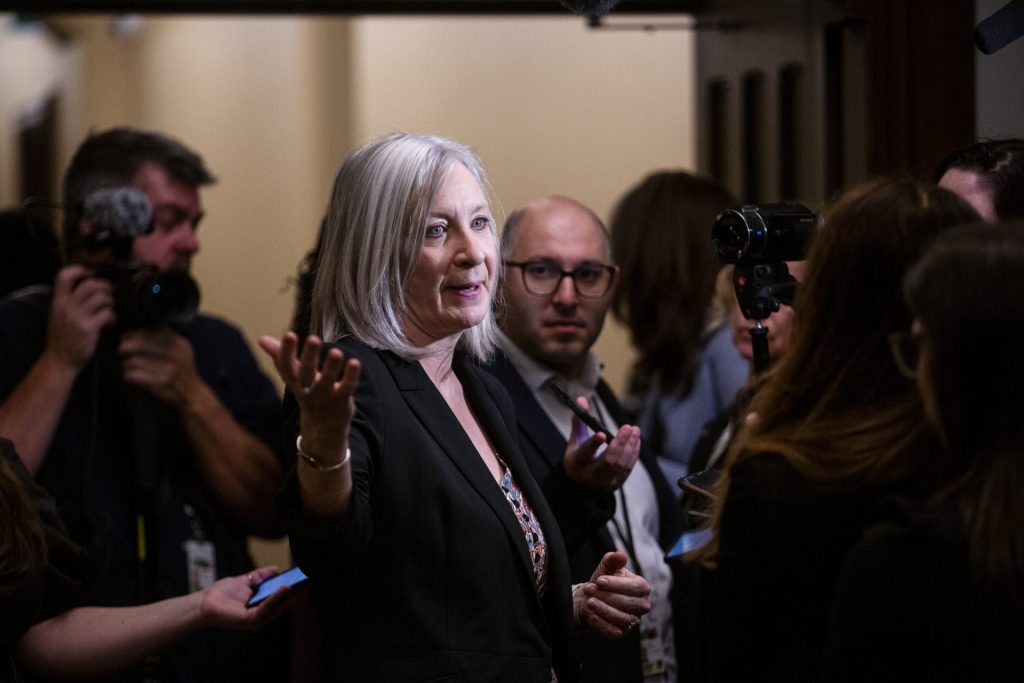Ministers also expected to take scissors to office budgets in spending review

The offices of Liberal cabinet ministers aren’t immune from the Carney government’s sweeping spending review, and will also have reduced budgets of 15 per cent over the next three years.
“You can’t have expenditure reduction across the public service without having ministerial staff take a haircut, too,” said David McLaughlin, a former chief of staff to then-prime minister Brian Mulroney and also chief of staff to Harper-era finance minister Jim Flaherty.
“It just politically doesn’t fly.”
Treasury Board spokesperson Martin Potvin confirmed ministers’ offices are part of the spending review launched this summer by Finance Minister François-Philippe Champagne (Saint-Maurice–Champlain, Que.), who has instructed departments across the federal government to find incremental savings starting at 7.5 per cent next fiscal year, reaching 10 per cent in 2026-27, and 15 per cent by 2027-28. Ministers were expected to present their plans to reach these targets by Aug. 28.
Unlike departmental budgets, full fiscal details on ministers’ offices aren’t a matter of public record, though office expenditures like travel are reported. Ministers’ budgets include personnel costs for political staff, operating costs, and more. A minister can ask for a budget increase from the Treasury Board, but first must get the blessing of the Prime Minister Office.
According to McLaughlin, when faced with budget cuts, ministers have options: cut staff, hire people at lower salaries, or “create a fit-for-purpose minister’s office by eliminating positions and allowing departments to pick up the slack.”
Unlike departmental budgets, full fiscal details on ministers’ offices aren’t a matter of public record, though office expenditures like travel are reported. Ministers’ budgets include personnel costs for political staff, operating costs, and more. The budgets are set by the Prime Minister’s Office, and approved by the Treasury Board Secretariat. A minister can ask for a budget increase from the Treasury Board, but first must get the blessing of the PMO.
Monique Lugli served as chief of staff to Anita Anand (Oakville East, Ont.) when she was Treasury Board president from 2023 until 2024. When the minister’s budget is set, “many chiefs will make a case about why they need more,” Lugli said, “very rarely saying they need less.”
Chiefs of staff in ministers’ offices are responsible for managing the budget after it’s put in place by the PMO and Treasury Board.
“They say, ‘OK, what are our priorities? Where do we need to put people?'” Lugli said, noting the budget includes both operating and staffing expenses. Raises to staffers are set out by Treasury Board guidelines.
“You have to manage the trips, the airfare, and then also the people.”
Lugli pointed out that ministers’ offices are cognizant of the costs that get publicly reported.
“Chiefs of staff are very prudent, and they are really conscious about public money,” she said.
Ministers’ offices aren’t all created equally, though. Some ministers are busier than others, with larger portfolios, more responsibilities, and even more staff. Departments that oversee many transfer programs—like Employment and Social Development—require “political responsiveness” and oversight from an involved minister, McLaughlin said, while procedure-heavy departments like Public Services and Procurement Canada need political staffers to keep the gears turning on ministerial reviews and approvals. Regulatory departments like Fisheries and Oceans also require political staff with knowledge of regional nuances. Political staff are also responsible for regional political operations, he said, with some departments having Quebec-based French-speaking political staffers.
Amid the spending review, ministers have been busy this summer staffing up their offices, as reported in Hill Climbers columns.
The Hill Times understands Jobs and Families Minister Patty Hajdu (Thunder Bay–Superior North, Ont.) currently has one of the largest ministerial offices, with a confirmed 28 staff including numerous policy advisers, communications advisers, and regional advisers covering the West, North, Ontario, Quebec, and the Atlantic.

Carney’s cabinet includes six secretaries of state—not counting Women and Gender Equality Minister Rechie Valdez (Mississauga-Streetsville, Ont.), who is also secretary of state for small business and tourism—who so far have assembled notably smaller political staff teams compared to their ministerial counterparts, with five staff total, for example, in Secretary of State Stephen Fuhr’s (Kelowna, B.C.) office.
The challenge in cutting ministers’ operating budgets is ensuring their offices “can still do what they need to do, and only they can do,” which is to provide political support to ministers, McLaughlin said.
“The bureaucracy of the public service writ large would prefer fewer [political] policy staff getting in the way of doing our jobs,” he said, “and political staff would say we need political people to drive bureaucracy, to produce policy. So there’s going to be tension there.”
McLaughlin said cutting ministers’ budgets could take the form of a “share-the-pain” approach, where cuts are made “regardless of demand” on ministers. But he noted his time in Flaherty’s office when the PMO approved a “modest” increase in the finance minister’s staff in order to deliver the budget.
“It’ll be interesting to see how far it goes, and whether there are exceptions,” he said. “But you’ve got to lead by example, and this is one example.”
Jocelyne Bourgon, former clerk of the Privy Council and secretary to the cabinet who served under former prime minister Jean Chrétien from 1994 until 1999, advocated for spending cuts to target political staff. She argued spending cuts have historically focused on departments, and “might it be worth starting at the top, for a change?”
She acknowledged her suggestion “may lack credibility” with political staffers, coming from a former public servant, “but let’s at least consider it,” she said at her June 18 keynote Manion Lecture at the Canada School of Public Service.
Bourgon estimated the ranks of political staffers grew 60 per cent between 2011 and 2024, and said “there are reasons to be concerned that this expansion has contributed to an erosion of ministerial authority, and—in some ways—has been undermining the cabinet system of government.”
In the dying days of the Trudeau government, there were close to 750 political staffers working in cabinet offices and the PMO.
Former prime minister Justin Trudeau was criticized for a ballooning cabinet, which peaked at 40 ministers in 2024 towards the end of his tenure. Ministers are paid $99,900, plus a $2,000 car allowance, on top of their base MP salary of $209,800 per year.
Prime Minister Mark Carney’s (Nepean, Ont.) first post-election cabinet was pared down from that of his predecessor, with a two-tier structure of 28 ministers and 10 secretaries of state, the latter of which make $74,700 on top of their base MP salary.
mglass@hilltimes.com
The Hill Times






 LICENSING
LICENSING PODCAST
PODCAST ALERTS
ALERTS













